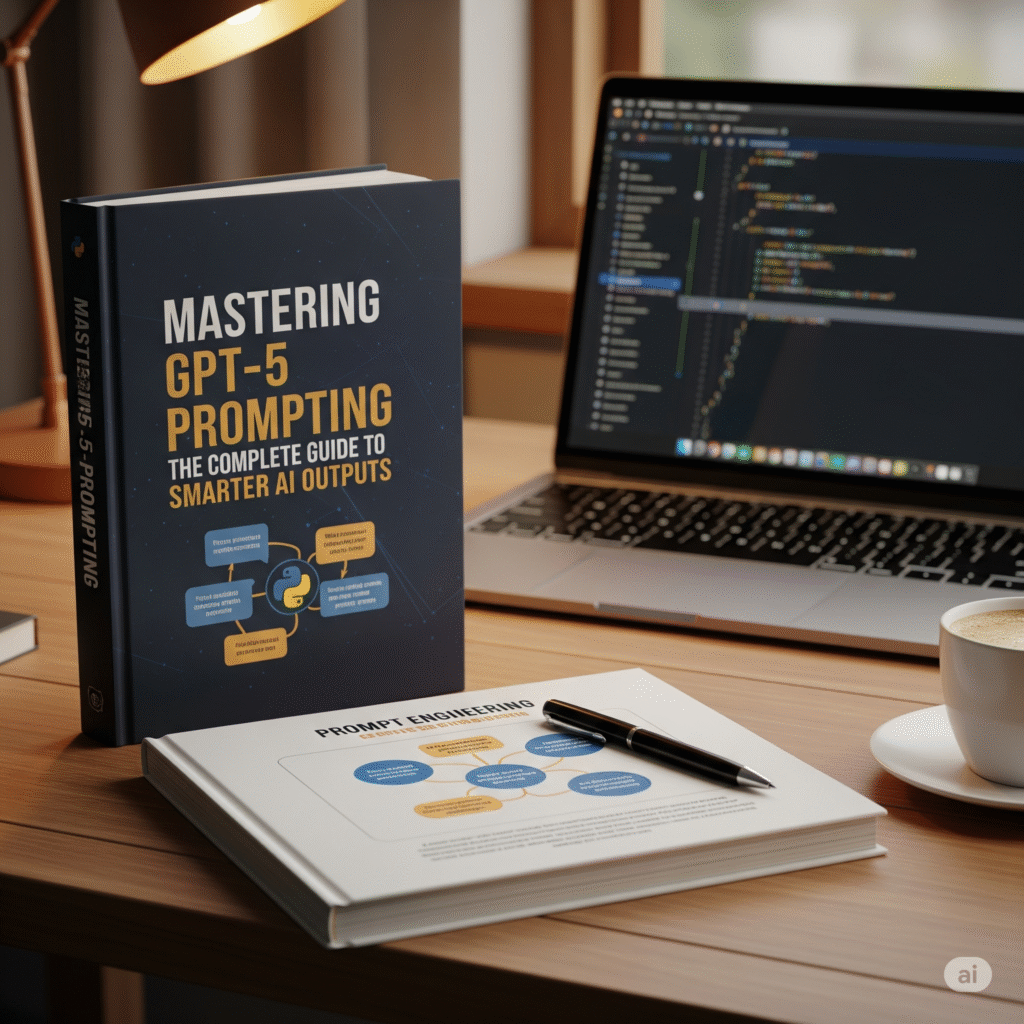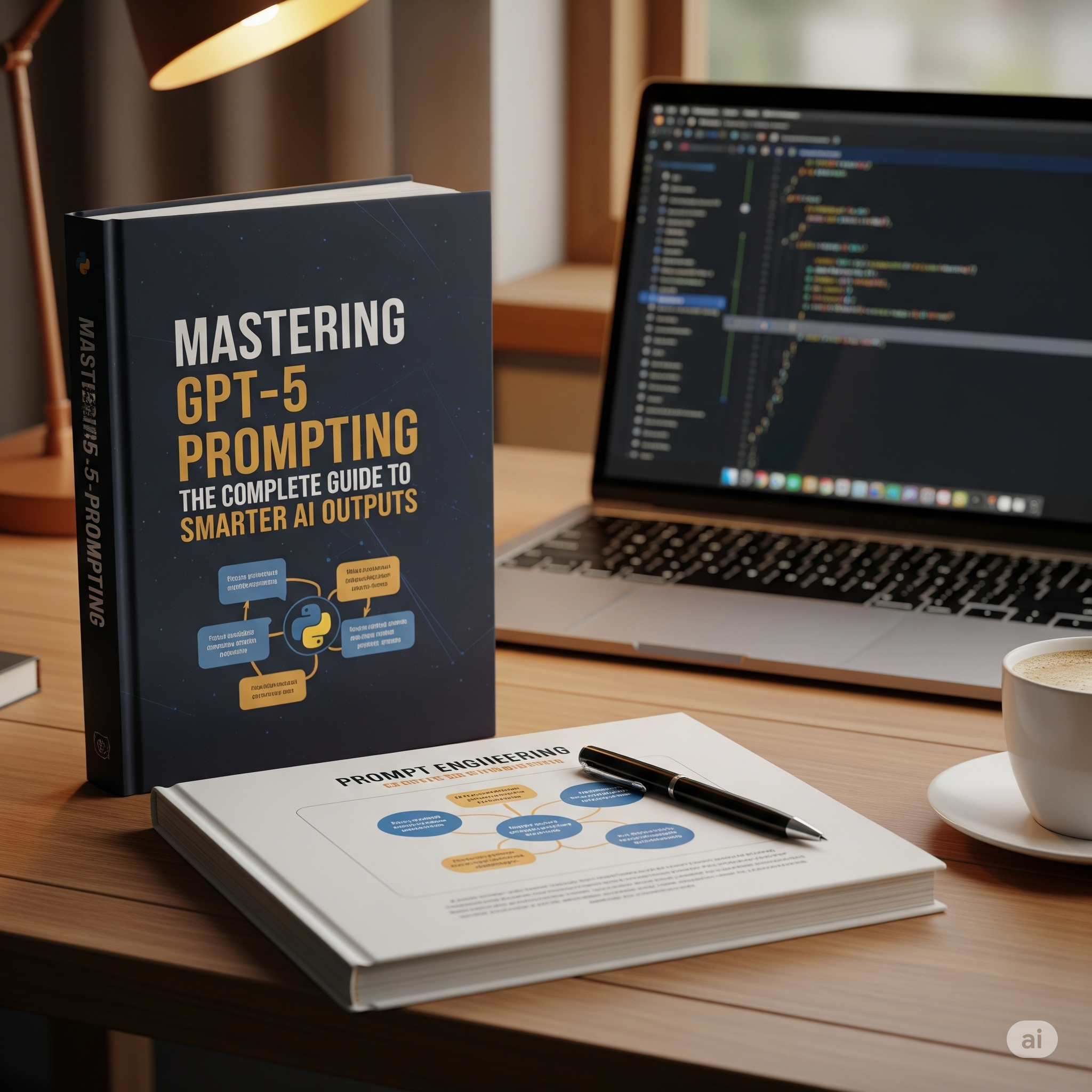In the world of artificial intelligence, the way you ask a question often matters just as much as the answer you receive. With the release of GPT-5, OpenAI has delivered a model that excels in reasoning, instruction-following, and agentic workflows but to unlock its full potential, you need to master the art of prompting.

This guide explores how to craft prompts that get the most accurate, useful, and context-aware results from GPT-5, along with actionable tips for different use cases like coding, content creation and automated agents.
Why Prompting Matters More with GPT-5
GPT-5 is designed to operate across a wide spectrum from highly autonomous decision-making to precisely following step-by-step instructions. This flexibility means it can:
- Handle complex multi-step reasoning
- Integrate with tools and APIs
- Adapt its tone, verbosity and style
- Manage long-context understanding
However, without the right prompt structure, you risk vague responses, unnecessary tool calls or inconsistent outputs.
In short: Prompting is your steering wheel for AI.
Check the GPT-5 Prompting guide here.
Key Strategies for GPT-5 Prompting
1. Calibrate Agentic Eagerness
Agentic eagerness refers to how proactive the model is when performing tasks. For efficiency, you can lower the reasoning_effort parameter to reduce over-exploration, or increase it for deeper problem-solving.
Example:
- Low eagerness: “Give the fastest possible answer even if it’s incomplete.”
- High eagerness: “Explore all possible solutions before responding.”
2. Use Clear Stop Conditions
Without defined boundaries, GPT-5 may overanalyze or perform unnecessary actions. Explicitly state:
- When to stop
- Which actions are safe
- When to hand control back to the user
This helps balance speed and thoroughness.
3. Optimize Context Gathering
When the model needs additional information, structure your instructions to:
- Start broad, then narrow the search
- Run queries in parallel
- Avoid excessive repetition
This ensures faster and more relevant responses.
4. Leverage Tool Preambles
For agent workflows, have GPT-5 restate the goal and outline a step-by-step plan before starting. This:
- Improves transparency
- Keeps multi-step tasks organized
- Helps users track progress
Advanced Prompting Techniques
A. Reasoning Control
The reasoning_effort parameter directly affects how deeply GPT-5 thinks before answering.
- Minimal reasoning: Ideal for quick, low-latency tasks.
- High reasoning: Best for complex, high-stakes decisions.
B. Verbosity Tuning
The verbosity parameter (or a natural language override) adjusts how much detail GPT-5 includes in its final output. You can:
- Keep it brief for summaries
- Expand it for in-depth analysis
- Mix settings depending on task type (e.g., concise text but detailed code comments)
C. Structured Prompting for Coding Excellence
When using GPT-5 for software development, structured prompts ensure that the generated code is clean, maintainable, and consistent with your existing project standards. Instead of leaving instructions open-ended, define your development parameters clearly:
- Specify the Tech Stack & Frameworks – State preferred frameworks, libraries, tools and spacing.
- Establish Naming & File Structure Conventions – Give clear guidance for component naming, folder organization and state management.
- Include Code Editing Rules – Promote modular design, reusability and simplicity.
- Prioritize Readability Over Cleverness – Encourage clear, well-commented code instead of overly abstract or compressed solutions.
Embedding these guardrails in your prompt helps GPT-5 produce production-ready code that blends seamlessly with your existing codebase, reducing the need for rewrites.
Common Prompting Pitfalls to Avoid
- Contradictory instructions – These confuse the model and can waste tokens.
- Vague goals – Always be specific about the desired outcome.
- Over-reliance on defaults – Fine-tuning parameters like
reasoning_effortandverbositycan dramatically improve results.
Real-World Use Cases
1. Customer Support Agents
- Define clear rules for escalation
- Use high persistence to reduce back-and-forth with the user
- Include context about product policies to minimize ambiguity
2. Content Creation
- Adjust verbosity for creative storytelling vs. concise news articles
- Provide tone guidelines (formal, friendly, persuasive)
- Use “goal + constraints” format for clarity
3. Software Development
- Break large tasks into iterative steps
- Apply self-reflection rubrics for higher quality code
- Maintain style consistency with existing codebases
Best Practices for GPT-5 Prompt Design
- Start with a clear objective – Know exactly what you want.
- Use step-by-step instructions – Break tasks into smaller, logical parts.
- Iterate and refine – Test variations of your prompt for best results.
- Match complexity with reasoning – Don’t waste high reasoning on simple tasks.
- Embed domain knowledge – Provide relevant context upfront.
Conclusion
GPT-5 is not just an upgrade, it’s a highly adaptable AI engine capable of excelling in any workflow, provided you guide it effectively. Mastering prompting means:
- Knowing when to keep it simple
- Knowing when to let the model explore
- Always giving it the right context and boundaries
Whether you’re building agentic workflows, creating content, or developing software, the right prompts can turn GPT-5 into a precise, creative, and reliable partner.
Related Reads
- Mastering Context Engineering: 6 Proven Strategies to Make AI Agents Smarter and More Reliable
- LangChain vs LlamaIndex: Powerful Retrieval-Augmented Generation Tools Compared
- 20+ Mind-Blowing LLM Apps You Can Build Today – From AI Agents to RAG Pipeline
- Top10 Beginner-Friendly LLM Projects to Kickstart Your AI Journey
- LLM Agents: What They Are, How They Work, and Why They’re the Future of Autonomous AI
External Resources
- OpenAI GPT-5 Prompting Guide (GitHub) – Official notebook with detailed prompting tips, parameter tuning, and real-world examples.
- OpenAI API Reference – GPT-5 – Parameters, endpoint details, and API usage for GPT-5.
- Responses API Documentation – How to control reasoning depth, verbosity, and tool calling.
- OpenAI Prompt Engineering Guide – Best practices for structuring prompts effectively.
- Cursor Blog – GPT-5 Integration – Insights from an AI-powered code editor team on prompt tuning.
- Prompt Engineering by Example – Examples of effective prompts for different AI tasks.


5 thoughts on “Mastering GPT-5 Prompting: The Complete Guide to Smarter AI Outputs”